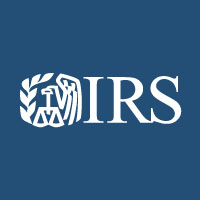IRS YouTube Videos:
Reminders for Extension Filers-Oct. 15 – English | Spanish | ASL
IR-2019-163, October 7, 2019
WASHINGTON — Taxpayers who requested the six-month filing extension should complete their tax returns and file on or before the Oct. 15 deadline. Convenient electronic filing options, including IRS Free File, are still available.
Filing electronically is easy, safe and the most accurate way to file taxes. There are a variety of electronic filing options. Those options include having tax returns prepared at a Volunteer Income Tax Assistance or Tax Counseling for the Elderly site, purchasing commercial software or choosing a reputable tax professional who is also an authorized e-file provider.
About 15 million taxpayers filed for an extension this year. Although Oct. 15 is the last day for most people to file, some may have more time. They include:
- Members of the military and others serving in a combat zone. They typically have 180 days after they leave the combat zone to file returns and pay any taxes due.
- Taxpayers in federally-declared disaster areas who already had valid extensions. For details, see the disaster relief page on IRS.gov.
Extension filers can file when they are ready and don’t have to wait until Oct. 15 to file. Taxpayers who did not request an extension and have yet to file a 2018 tax return can generally avoid additional penalties and interest by filing the return as soon as possible and paying any taxes owed.
New Form 1040
Form 1040 has been redesigned for tax year 2018. The revised form consolidates Forms 1040, 1040A and 1040-EZ into one form that all individual taxpayers will use to file their 2018 federal income tax return.
The new form uses a “building block” approach that can be supplemented with additional schedules as needed. Taxpayers with straightforward tax situations will only need to file the Form 1040 with no additional schedules. People who use tax software will still follow the steps they’re familiar with from previous years. Since nearly 90 percent of taxpayers now use tax software, the IRS expects the change to Form 1040 and its schedules to be seamless for those who file electronically.
Recordkeeping and adjusted gross income
As a reminder, taxpayers should keep a copy of their tax returns and supporting documents for a minimum of three years. Some taxpayers using a tax-filing software product for the first time may need their adjusted gross income amount from their prior-year tax return to verify their identity.
Taxpayers using the same tax software they used last year will not need to enter their prior year information to electronically sign their 2018 tax return. Taxpayers can learn more about how to verify their identity and electronically sign tax returns at Validating Your Electronically Filed Tax Return.
Payment options
IRS Direct Pay offers taxpayers a fast way to pay what they owe. Direct Pay is free and allows individuals to securely pay their tax bills or make quarterly estimated tax payments online directly from checking or savings accounts without any fees or pre-registration.
Taxpayers can also pay by debit or credit card. While the IRS does not charge a fee for this service, the payment processer does. Other payment options include the Electronic Federal Tax Payment System (enrollment is required) and electronic funds withdrawal which is available when e-filing. Taxpayers can also pay what they owe using the IRS2Go mobile app. Those choosing to pay by check or money order should make the payment out to the “United States Treasury.”
Eligible taxpayers can set up an online payment agreement in a matter of minutes to pay tax, interest and penalties they may owe. There is no application fee to setup payment plans lasting 120 days or less. In 2019, over 1 million agreements were set up by taxpayers online.
Individual taxpayers can go to IRS.gov/account and login to view their balance, payment history, pay their taxes and access tax records through Get Transcript. Before setting up an account, taxpayers should review Secure Access: How to Register for Certain Online Self-Help Tools to make sure they have the information needed to verify their identities.
Prepare for next year − Do a ‘Paycheck Checkup’ now
The IRS also urges extension filers to do a “Paycheck Checkup” now. It helps make sure the right amount is being withheld from their checks following tax reform. If a change is needed, there’s still time to adjust withholding during the last quarter of the year.
Taxpayers can use the Tax Withholding Estimator to approximate their 2019 income taxes and proper withholding. The tool compares the estimate to current withholding to help taxpayers decide if they want to change that amount with their employer. Taxpayers should have their 2018 tax return available when using the tool to estimate income, deductions, adjustments and credits for 2019. They will also need their most recent pay stub to compute the amount of withholding so far this year.
With major changes made by the Tax Cuts and Jobs Act, the IRS encourages taxpayers seeking more information on tax reform to review Publication 5307, Tax Reform: Basics for Individuals and Families (PDF), and Publication 5318, Tax Reform What’s News for Your Business (PDF). For other tips and resources, visit IRS.gov/taxreform. The IRS reminds taxpayers they have a variety of options to get help filing and preparing their tax returns on IRS.gov, the official IRS website. Taxpayers can find answers to their tax questions and resolve tax issues online. The Let Us Help You page helps answer most tax questions, and the IRS Services Guide (PDF) links to these and other IRS services.

